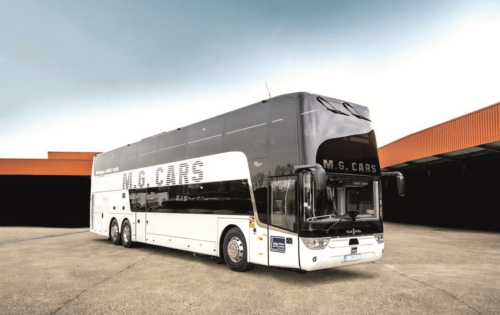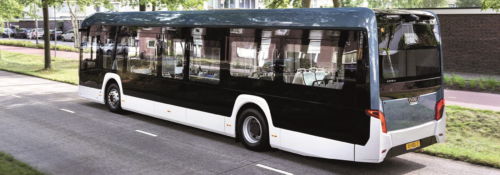
BELGIUM
It is reported that 1,600 jobs will be lost at Van Hool following the news that the manufacturer, which filed for bankruptcy on Friday 5 April, was declared bankrupt by Belgium’s Commercial Court on the morning of Monday 8 April. The company employs around 2,500 people, but local reports suggest far fewer of those will be retained than had been expected.
Dutch bus manufacturer VDL along with German trailer manufacturer Schmitz Cargobull look likely to take over Van Hool, according to local sources, with Mellor and WN VTech Group saviour Guido Dumarey said to be out of the running; reports suggest that the stronger financial position of VDL and Schmitz is seen as a more secure future than the promises of fewer local job losses in Dumarey’s plans. It is reported that between 600 and 900 jobs will remain.
Christophe Van Audenhove of the trade union ACLVB told local media outlet VRT News prior to the official announcement to staff: “I will only be able to say later how people will react. We will inform everyone after the extraordinary Works’ Council meeting. They have known for some time that any news will be bad news. Some will be relieved by the fact that they will still have some guarantees for the future, but I think disappointment will prevail.
“Regardless of this we will continue to step up and assume our responsibility as union reps to ensure that the 600 to 900 people that will remain in employment can continue to work in the best possible conditions.”

Recovery plan failure
Van Hool presented its Recovery Plan on 11 March, in an attempt to attract new capital and strengthen the company’s financial situation. Subsequent discussions were held with various stakeholders, including banks, government agencies, shareholders, the Board of Directors, unions, and potential investors, and Van Hool later said that it had ‘proved to be a challenging yet feasible plan’ and had been ‘well received by stakeholders.’
However, an inheritance dispute among shareholders and the Van Hool family complicated the planned course of action, and Van Hool says that despite deadlines and efforts, a swift resolution to the family dispute proved unattainable. As a consequence, the confidence of other stakeholders in bolstering
Van Hool’s equity further diminished, and led it to acknowledge that the implementation of the Recovery Plan by 31 March in a business continuity situation was no longer viable.
The trade union laid the blame for the failure squarely at the door of the Van Hool family. “They had the key in their hands, which they did not use,” said workers’ representative Kim Samison. “Family disputes belong at the kitchen table, not the bargaining table. We are union officials, not family therapists or mediators. We can only feel vicarious shame.” She placed ultimate responsibility ‘mainly on the Van Hool family, who could not settle a family dispute’ and said the situation was ‘sad.’
Co-CEO Marc Zwaaneveld, who had been brought in to help reshape the company, also explicitly referred to the role of the owners. “Unfortunately, due to an inheritance dispute, bankruptcy was unavoidable. At this point it is over for everyone, an independent Van Hool is coming to an end,” he said, his own role at the troubled firm also coming to an end.

Positivity but no solution
The company had previously said it had already initiated discussions in parallel to the Recovery Plan with potential acquirers to explore a possible restart. “We absolutely refuse to give up and continue to make maximum efforts to find a solution by the end of March,” Marc said in late March. “We believe that a solution is still achievable, but we need the maximum support from all involved parties. Let’s work together and remain calm to make a sustainable future possible.”
After the staff meeting, Marc expressed his appreciation for the Van Hool staff. “It has not been easy for them. They are often people from the region, with a heart for Van Hool. This is a very bitter pill for them,” he said.
Kim Samison also thanked the staff. “The employees of Van Hool were the leading actors in a bad film, the screenplay of which was written by others. It is unprecedented what they went through and unprecedented how they dealt with it. That is the only thing Van Hool can be proud of,” she said.
VDL is said to be primarily interested in acquiring the Van Hool plant located in northern Macedonia, as well as eying up Van Hool’s market share in the USA where it has a good foothold through its dealer ABC Companies. VDL is currently preparing to inaugurate its own new factory in Roeselare, further adding to fears for the future of Van Hool’s Koningshooikt site. It is believed that research and development work would still be carried out at Koningshooikt under VDL ownership.
Schmitz’s plans for the commercial vehicle trailer side of the business remain less clear at present.


